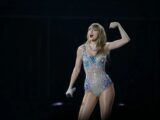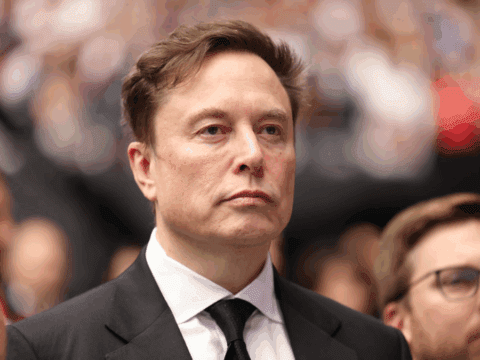Professor emeritus of history at the University of Calgary, Donald B. Smith has written extensively on Ojibwa and Methodist interactions in the 19th century. He spoke to Richard Wright on the phone from Calgary.
Richard Wright: Your own ancestry isn’t First Nations. How did you come to make First Nations history your life’s work?
You may unsubscribe from any of our newsletters at any time.
Donald B. Smith: My interest grew bit by bit, really. There were a number of factors at work.
I grew up in Oakville, Ont., and it was just like so many other places in southern Canada: we thought that before us this had been empty land. There were no predecessors to us. We were it. The First Nations people who had inhabited this land didn’t come into the picture at all. I didn’t know anything about them, I must admit. When I did find out, what a revelation!
I think the really determining thing was a conference at Trinity College [part of the University of Toronto] on the “North American Indian,” which was quite unusual at the time. I’d studied Canadian history, but I didn’t know anything about this stuff. It was a missing chapter.
Then, that summer, 1966, I worked with First Nations people on the railway in Manitoba and Saskatchewan, and they had a totally different culture. Another revelation.
RW: Your latest book, Mississauga Portraits: Ojibwe Voices from Nineteenth-Century Canada, recreates the lives of eight prominent Ojibwa figures from the early and mid-19th century, a critical period for First Nations people during which their autonomy and their traditional lands were steadily and catastrophically eroded. As I gather from your book, the Ojibwa inhabited most of southern Ontario from present-day Windsor to present-day Cornwall. How did your focus on them come about?
DBS: I was going to do my PhD at the University of Toronto, and at Victoria University at the U of T, there’s an enormous cache of Native-produced material. Fortuitously, I came across the records of Peter Jones, the central character of much of my historical writing.
Peter Jones was an Ojibwa. His dad was a white surveyor, but Peter was raised by his [Ojibwa] mother and lived with his mother’s people for the first 14 years of his life. He became bilingual, bicultural. And he wrote copious diaries in English. You can go through them and see the First Nations perspective — or a First Nations perspective — on very formative events in Upper Canada’s history. It was an irresistible opportunity.
RW: In the book, you paint portraits of eight important Ojibwa people, all from roughly the same vintage as Peter Jones and all connected in some way with the Methodist Church of the time. Who was most interesting to you? Which is your favourite among them?
DBS: That’s a tough one. If I have to choose, I’ll pick the trickster fellow, Maungwudaus. He’s the naughty one — naughty by Methodist standards, that is. He does things differently. He doesn’t like Peter Jones’s agenda. Peter Jones swings toward the dominant society too much, and Maungwudaus doesn’t like that at all. He does a number of eccentric things, the most notable of which is having his own “Wild West” show.
RS: You didn’t find that show — featuring Maungwudaus shooting an apple off a boy’s head, William Tell-style, and a simulated scalping “never before attempted in this country,” to quote the promotional poster — for want of a better word, a little tacky? Was it not a cheapening of First Nations culture?
DBS: Some would say that. Peter Jones wouldn’t like it because Maungwudaus was projecting this “uncivilized” image of First Nations, but nevertheless, I think it shows he’s real. To me there’s nothing wrong with what Maungwudaus is doing. Some of the things on the poster reproduced in the book seem a bit over the top, I agree, but I wouldn’t dwell on that too much. Look at where he goes. He goes to England and France and to the United States, performs and has a brilliant career. I think he’s my favourite.
United Church readers might like Nahnebahnwequay [Catherine Sutton], the only woman in the book. Her record is just so impeccable. She’s so courageous. She talks her way into Buckingham Palace to make an argument for a land claim. In 1860!
RW: The events in your book mostly predate the residential school system, but the seeds of the system were being planted during the early and mid-19th century. How do you view the role of the Methodist Church at the time? Was it positive for First Nations people in their lives, or was it subversive of their culture?
DBS: I’ll tell you what I think about the Methodists. [Missionaries like] William Case and Egerton Ryerson and James Evans, who helped develop the syllabics [a writing system for Ojibwa and Cree]: I think they were outstanding in their own right. They did want First Nations to come into the larger society, but they were for equality.
The difference comes in the next generation when race theory and social Darwinism emerge, and First Nations people are considered inferior. There’s none of that in this period. With Ryerson, for example, he and Peter Jones had an exemplary friendship.
RW: That may be, but was Ryerson not influencing his friend to abandon bona fide First Nations culture to embrace European culture?
DBS: Yes. But that would have been the conventional wisdom of the time. We are all reflective of our age.
RW: And what about the heroes of your story, the First Nations leaders, many of whom became staunch Methodists for most of their lives: were they not in some sense traitors to their own culture?
DBS: No. How can you say that? They were equipping their people for the new world. Were they going to stand by while their people continued to be cheated by the traders, continued to make these ludicrous treaties? First Nations people didn’t have a leg to stand on because they didn’t know English. They needed to know English. They needed to know arithmetic.
RW: I’m not sure that would be a popular sentiment these days. I’m not sure it was even then. Let me read a passage from your book that struck me as telling. You are writing about one of your eight figures, George Copway, who’s on a mission to northern Ontario in 1834. “A warrior named Spear Maker threatened to tomahawk George Copway if he ever approached his wigwam to talk about Christianity,” you write. “Regardless of the threat, the brave young convert visited families who lived near Spear Maker . . . ‘with no other weapon than a little calico bag containing our Testament and Hymn Book.’” Might First Nations people nowadays be inclined to say that the “brave” person in this scenario was Spear Maker, standing up to the tide of integrationism, and not George Copway with his calico bag?
DBS: I’m sure they could. These eight people all had their strengths and weaknesses. They did things differently because they lived in a different era. But the way I see it is, they liked the core values [of Christianity]. There wasn’t anything alien in those core values. To me, a non-Aboriginal person, the core values seem identical.
RW: Well, that raises another question. As a white person dealing in First Nations history, do you ever feel any misgivings about the point of view you bring to the work? Do you ever feel that First Nations people should be telling their own stories?
DBS: Absolutely. Do I ever. So, why am I doing this? Because there’s a huge gap. It’s not being done. I feel comfortable doing this because at the very least I’m putting First Nations back into the picture they were eliminated from. You have to have more Aboriginal people doing it. Of course you do, and they will — they’re coming on-stream.
My responsibility to students has been to present the whole history of Canada. Which includes the integral role First Nations played in Canada’s history from the beginning, and how the present situation, the inequality, came about. That’s my job. It’s my passion.
This interview has been condensed and edited.
***
This story first appeared in The United Church Observer’s October 2014 issue with the title “’I’d studied Canadian history, but I didn’t know anything about First Nations. It was a missing chapter.’”














